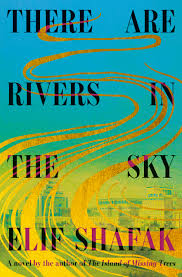H: NARIN: By the River Tigris, 2014
byNarin and her grandmother walk along the banks of the River Tigris in 2014, a tranquil yet powerful bond growing between them as they collect wild herbs. The air is crisp, and the sounds of the river gently rolling over its banks echo in the background. As Narin contemplates their existence, she grows increasingly frustrated with the way her grandmother is misunderstood. Often seen as illiterate and unimportant by the outside world, her grandmother holds a depth of wisdom, knowledge, and spiritual significance that is passed down through generations. Narin wishes people could look beyond her grandmother’s apparent simplicity and see the wealth of stories and wisdom she carries—stories that connect their heritage to the divine. With a quiet sense of reverence, Grandma shares a tale passed down through their family, a story that begins with the creation of the world itself.
Grandma recounts how God, or Xwedê, existed alone in silence before creating a radiant pearl filled with divine light, setting the stage for the unfolding of creation. A magical bird named Anfar is tasked with guarding this sacred pearl until, for reasons unknown, God smashes it, sending the pieces cascading into the creation of mountains, forests, and rivers. This act of divine destruction is not a sign of wrath, but of creation, giving birth to the natural world. From this chaotic beauty, angels and humans are born, marking the beginning of life on earth. For the Yazidis, the creation story is tied to their understanding of their place in the world, with a unique perspective that links them directly to Adam, unlike other faiths that trace their lineage differently. This distinction is significant to their identity, offering them a sense of belonging within the universe.
As the narrative unfolds, Grandma gently shifts the topic to the inevitable changes threatening their homeland—the construction of a dam that will flood their cherished land and submerge their ancestral memories. She speaks with sadness and wisdom about the loss of the pistachio trees and the various species of birds whose lives depend on the habitat they’ve known for generations. These deep, intimate connections to nature form the backbone of their identity, and the thought of it being washed away is too much to bear. In this moment of shared grief, Grandma introduces a fantastical notion: a dream of building an ark, similar to that of Baba Noah, to preserve their home and the life they’ve nurtured. The idea is not merely an escape but an attempt to protect the memories and traditions that have been passed down through the ages. Grandma also speaks of the soul’s journey, assuring Narin that even in the face of death and destruction, the soul continues, reincarnating over time, experiencing the world again and again. The belief in reincarnation brings a sense of comfort to Narin, helping her to understand that nothing truly ends—it only transforms.
As they continue to walk, the conversation meanders to other topics, including Grandma’s tattoo, a deeply personal marking of identity and culture. She also speaks of the spirits that guide them and tells the tale of an Englishman’s grave, which stands as a poignant reminder of loss. This Englishman had come to the region searching for lost poetry but tragically perished from thirst, a death that resonates with the deeper meaning of their existence. His story, like so many others, serves as a symbol of longing and the fragility of life. His grave, neglected and forgotten by the world around it, stands as a stark contrast to the destruction caused by the approaching dam. The chapter closes with the disturbing realization that change is unavoidable; the bulldozers are already beginning their work, tearing down the landscape and forever altering the world Narin has known. As Narin contemplates this, she feels a mixture of sorrow and uncertainty. Her thoughts are heavy with questions about her future, her heritage, and the loss of the world she has loved. The looming destruction feels both personal and universal, encapsulating the complex emotions tied to family, tradition, and the environment. This chapter beautifully captures the essence of how nature, history, and identity are intertwined, and how deeply these elements affect the characters’ lives. Narin’s inner conflict—her desire to preserve the past while facing an inevitable future—remains unresolved, leaving her with a sense of longing and hope for something better amid the encroaching changes.

